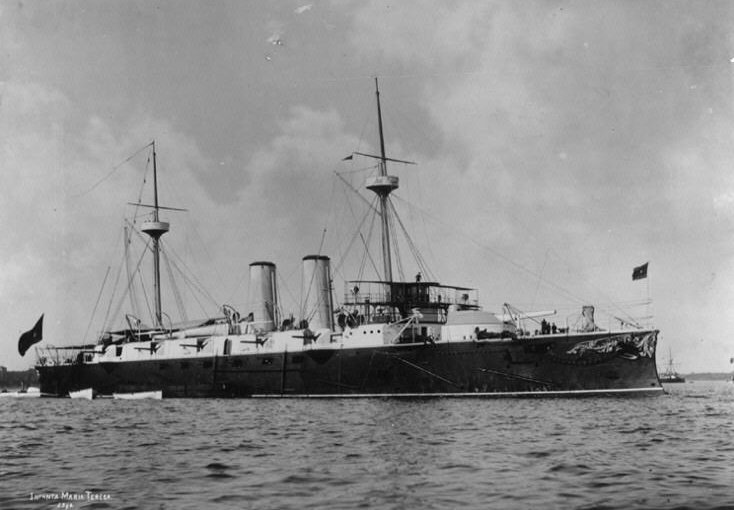
The Infanta Maria Teresa - about 1895.
Source: The Naval Historical Center
See the Spanish American War Centennial Web Site to view a chart of hits taken by the Infanta Maria Teresa.
The wreck of the Infanta Maria Teresa in shallow waters off the coast of Cuba has become a diving spot of some interest of late. The below are photographs taken on the ship in 1999, courtesy of John Seabury and Greenwood Resort, Cat Island, Bahamas:
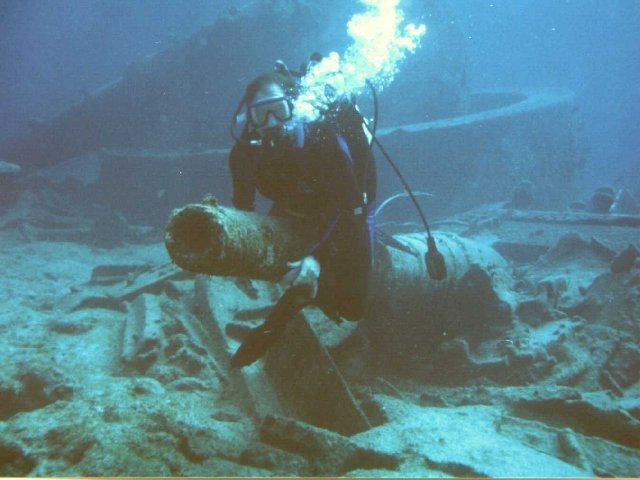
Diver on one of the Infanta Maria Teresa's secondary guns. This is a good view of one of the ship's two barbettes in the background.
Click on the above image for a larger version of the same photograph.
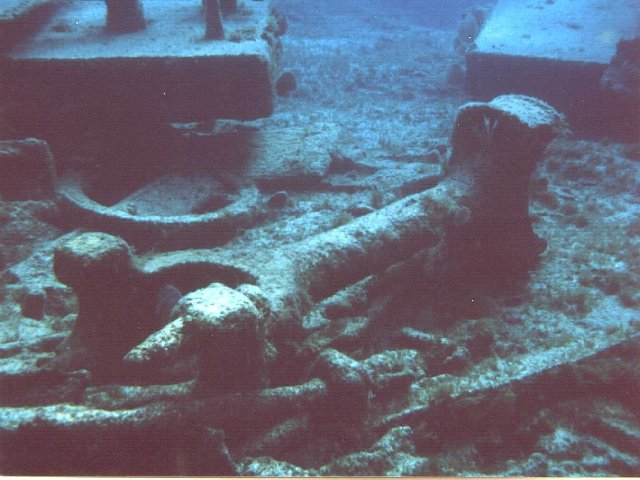
Machinery lying about on the wreck of Infanta Maria Teresa.
Click on the above image for a larger version of the same photograph.
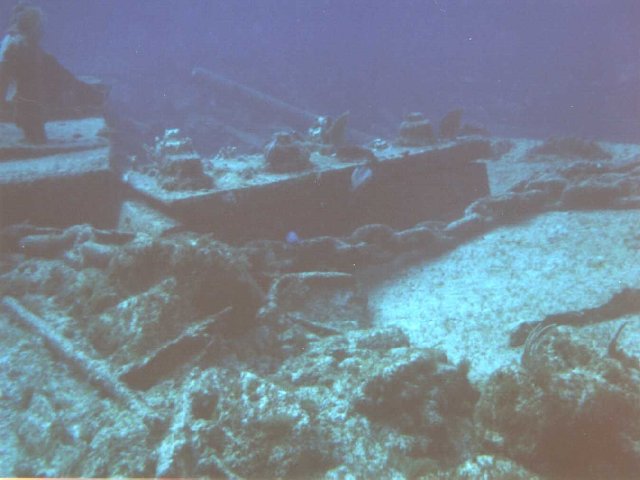
Anchor chain and more machinery lying about on the wreck of Infanta Maria Teresa.
Click on the above image for a larger version of the same photograph.
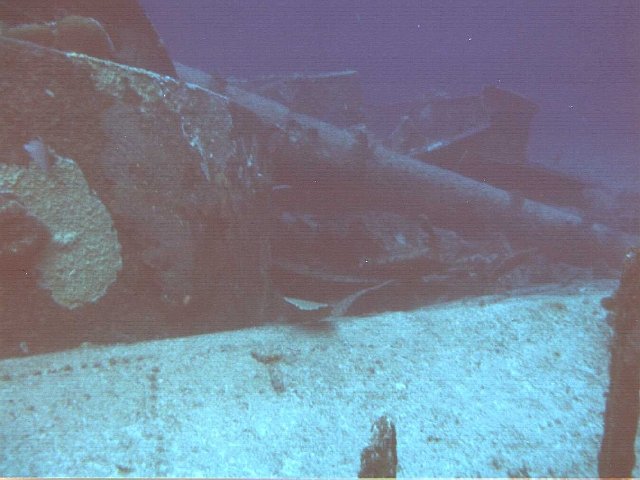
View of gun and side of barbette on the wreck of Infanta Maria Teresa.
Click on the above image for a larger version of the same photograph.
For centuries, guns taken from a vanquished foe have been displayed as victory trophies. The Spanish American War was no exception to this tradition. A 5.5-inch Hontoria gun from the Infanta Maria Teresa survives today as a trophy of a war fought over 100 years ago.
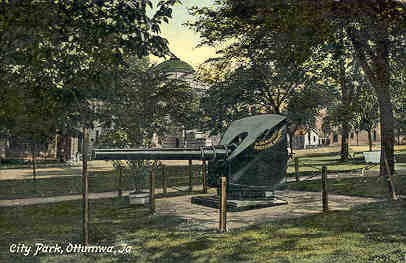
A picture postcard of the Infanta Maria Teresa's gun in Ottumwa, Iowa - 1907.
Source: The Ottumwa Iowa Historic Preservation Commission
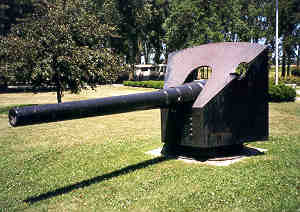
A current picture of the Infanta Maria Teresa's gun in Ottumwa, Iowa.
Source: The Ottumwa Iowa Historic Preservation Commission
Special thanks to Tom Quinn of the The Ottumwa Iowa Historic Preservation Commission for supplying the images of the Ottumwa gun. I'd love to hear how and why the gun came to rest in Ottumwa. No doubt some connection to the U.S.S. Iowa's participation in the battle. If you have information on the how and why this relic of the the Infanta Maria Teresa rests in Ottumwa, please e-mail me at [email protected]
A additional prize seized from the Infanta Maria Teresa is her bow barbette lantern as shown on the Spanish American War Centennial Web Site.